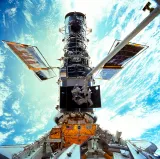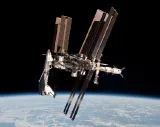Friday 8 July marked the end of an epoch in spaceflight, as the last ever Space Shuttle mission launched from Kennedy Space Center.Space Shuttle Atlantis carried a crew of four to the International Space Station (ISS) to deliver crucial supplies and equipment on mission STS-135.
The lift-off brings to a close a 30 year period in which the Space Shuttle served as NASA’s workhorse, launching satellites and space observatories, including the Hubble Space Telescope, conducting small-scale space experiments, and hauling parts and supplies to the ISS.
Over three decades of service, there have been five craft in the Shuttle fleet, Columbia and Challenger (both of which were involved in fatal accidents), Discovery, Atlantis and Endeavour, as well as the Shuttle prototype Enterprise, which flew test flights in 1977.
Together, the fleet of five operational Shuttles has made a total of 134 flights to space, beginning with Columbia’s mission STS-1 in April 1981. The five craft have logged more than 1,300 days off the ground and have completed near to 21,000 orbits of our planet.

Throughout the 80s and 90s, the Shuttle carried the reusable Spacelab experiments to orbit in its large 4.6x18m cargo bas. In April 1990, Discovery launched the Hubble Space Telescope, fixing its defective optics in 1993. And in December 1998, Endeavour carried out the first assembly flight to the ISS.
Destined for display
Atlantis’s return to Earth after its two-week mission signalled a – hopefully temporary – lull in NASA’s large-scale manned operations in space.
But the three remaining Shuttle craft won’t be broken up and sold for scrap: they’ll become monuments to human endeavour, inspiring future generations.
The fleet is to be dispatched to museums across the United States. The first ever Shuttle, Enterprise, already on display at the National Air And Space Museum’s Steven F Udvar-Hazy Center near Washington, will be replaced by Discovery. Enterprise will move to New York’s Intrepid Sea, Air and Space Museum.
Once it’s been decommissioned, Endeavour will head to the California Science Center, while Atlantis will make the short trip to a new $100,000,000 display at the Kennedy Space Center Visitor Complex.
It will also be the end of an era for many workers at the Kennedy Space Center, who are facing big job losses with the retirement of the Shuttle. Florida’s ‘space-coast’ community shares as uncertain a future, some reports have put up to 20,000 jobs on the line.

Future spaceflight
From now on NASA will have to rely on the Russian Soyuz spacecraft to get its astronauts to the International Space Station.
Already though, several commercial companies are developing ways to get into space that may prove to be cheaper and more efficient than the venerable Shuttle.
Space X, for example, has already launched and tested its Falcon 9 rocket and Dragon capsule, which will take cargo – and perhaps eventually astronauts – to the International Space Station.
At the same time, NASA itself is looking into ways to go beyond low-Earth orbit.
The ‘Space Launch System’ is one idea that would involve a heavy-lift rocket capable of launching a manned spacecraft (the Multi-Purpose Crew Vehicle) to a nearby asteroid and perhaps even Mars.
